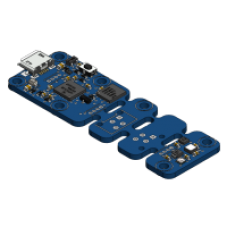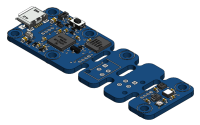 Your own USB weather station: the Yocto-Meteo-V2 device lets you measure via USB the current humidity, pressure, and temperature, as well as record the pressure, ambient temperature and humidity on its internal flash for later retrieval when connected again by USB (built-in data logger). This product is ideal to build your own DIY weather station, and to monitor the weather conditions in your garden or the environmental conditions in your lab.
Your own USB weather station: the Yocto-Meteo-V2 device lets you measure via USB the current humidity, pressure, and temperature, as well as record the pressure, ambient temperature and humidity on its internal flash for later retrieval when connected again by USB (built-in data logger). This product is ideal to build your own DIY weather station, and to monitor the weather conditions in your garden or the environmental conditions in your lab.
This device replaces the original Yocto-Meteo, as the SHT25 sensor used in that first version is now end-of-life. The Yocto-Meteo-V2 is 100% backward-compatible with the Yocto-Meteo. It simply provides significantly more accurate measurements. The sensors on the Yocto-Meteo-V2 are water-resistant, without need for a SF2 filter cap.
This meter circuit has been designed so that the sensor itself can be moved away from the USB connector by a few meters: simply split the board into two parts and solder a 4-wire cable on the designated pads.
This device can be connected directly to an Ethernet network using a YoctoHub-Ethernet, to a WiFi network using a YoctoHub-Wireless-n and to a GSM network using a YoctoHub-GSM.
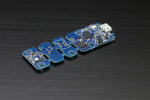 |
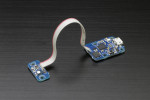 |
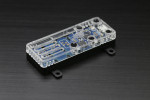 |
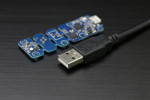 |
USB cables and enclosures to be ordered separately.
Specifications
Product ID:METEOMK2Product name:Yocto-Meteo-V2
USB connector:micro-B
Width:20mm
Length:60mm
Weight:4g
Sensor:SHT35 (Sensirion), ICP-10100 (TDK)
Accuracy (H):1.5%
Accuracy (P rel):0.01mbar
Accuracy (T):0.2Ѓ
Protection class, according to IEC 61140:class III
Normal operating temperature:5...40Ѓ
Extended operating temperature1:-30...85Ѓ
Supported Operating Systems:Windows (PC + IoT), Linux (Intel + ARM), macOS, Android
Drivers:Driverless, no driver needed
API / SDK / Libraries:C++ Obj-C C# VB.NET UWP Delphi Python Java Android LabVIEW
API / SDK / Libraries (TCP only):Javascript Node.js PHP
RoHS compliance:RoHS III (2011/65/UE+2015/863)
Suggested enclosure:YoctoBox-Long-Thin-Black-Vents
Harmonized tariff code:9032.9000
Cables and enclosures:available separately
Made in:Switzerland
1 The extended temperature range is defined based on components specifications and has been tested during a limited duration (1h). When using the device in harsh environments for a long period of time, we strongly advise to run extensive tests before going to production.

